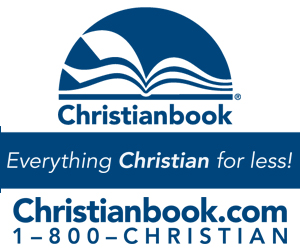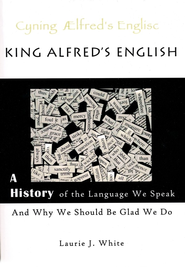 |
 |
|||
 |
 |
 |
 |
|
$39.98 |
$14.98 |
|||
The Power in Your Hands: Writing Nonfiction in High School is for what grade levels?
The Power in Your Hands is for students in grades 9-12. Younger students will be frustrated with the material and will be better served by Jump In, which is for grades 5 – 8.
Can I use The Power in Your Hands for my homeschool?
Definitely. The Power in Your Hands was developed to take the burden of teaching a writing class from the shoulders of homeschool moms, and it has been used successfully in Christian schools and co-ops as well.
What will my students learn in The Power in Your Hands?
High school students will learn writing skills they can use the rest of their lives. These include brainstorming, organizing their thoughts, using appropriate point orders, citing sources, introduction and conclusion know-how, proofreading, writing for a specific audience, and much more. In addition, they’ll learn how to write in all four modes of nonfiction writing: persuasion, exposition, description, and narration.
This practical textbook includes specific instructions for writing at least 22 essays and reports and includes focused checklists for each assignment. Some of the assignments include the logical appeal, the moral/ethical appeal, the SAT essay, process or how-to writing, a research paper with documentation, comparison and contrast, a literary analysis, descriptive essays, and much, much more. Check out the table of contents and samples from The Power in Your Hands by clicking on the “Free Sample” button beneath each textbook cover at the top of the page.
The material sounds difficult. Is The Power in Your Hands for college-bound students only?
The Power in Your Hands has been specially engineered for beginning writers and college-bound writers. How is this possible? Sharon Watson is experienced in teaching writers at all skill levels, and she brings her expertise to this curriculum. Beginning writers will quickly catch up with their age-mates and gain confidence to tackle the chapters. The incremental, conversational, practical text will equip them for school or professional writing. Experienced writers will learn new material early and be challenged by the Digging Deeper sections found throughout the text.
I've heard I can use The Power in Your Hands for more than one year. Is this true?
Absolutely. Here’s how:
1. When public and private schools give a writing assignment, the students do their work at home and still have classes during the day. This schedule is not necessary in homeschools. You can assign the essay at the end of the chapter and then follow the suggested writing schedule. The daily tasks in the schedule can be done during your normal writing-class time. The book will last for two years with this schedule, and your student won’t feel hurried. (And neither will you!)
2. The Teacher’s Guide contains a fun program called 14-Minute Writing Surges. These writing prompts cover fiction and nonfiction writing for the school year. You can use this program for a whole year before or after you use The Power in Your Hands, or you can take a break from the textbook for a few days or weeks by using the Writing Surges. It’s a fun way for your student to write on an interesting topic without being evaluated on everything he or she writes.
3. If you combine numbers 1 and 2, you can use The Power in Your Hands for three years. This will give your teens a thorough knowledge of the material at a leisurely pace.
How do I grade my students' papers?
The Teacher’s Guide to The Power in Your Hands contains a grading section with evaluation forms/rubrics and a very practical guide called “How to Earn an A,” “How to Earn a B,” and so forth. The examples there are from real papers by real students and explain exactly why the papers earned those grades. You also have a copy of each assignment’s checklist in the answer key part of the teacher’s guide.
Teachers may want to grade more leniently early in the school year and then use more questions from the evaluation forms as students learn the material in the workbook. If students know ahead of time what questions teachers will use to grade their papers, students have a better idea of what to aim for.
Will my student learn how to proofread his or her own work?
Yes. Be Your Own Editor, a one-page proofreading tool, teaches students how to catch their own mistakes by asking the right questions. Much time is spent in the textbook showing students how to proofread. In addition, they are asked to evaluate professional and student writing, which gives them a keener eye when evaluating their own work.
I've noticed horizontal lines in the text every few pages. What's that about?
The horizontal lines in the text indicate when that day’s lesson is finished. Because The Power in Your Hands can be used as a self-guided text by students, the lines give a visual clue to student and parent as to how long each day’s lesson is. No guessing or prior planning is needed.
The text uses humor, and some of the writing assignments are light-hearted. Why doesn't the curriculum teach students how to write about important issues?
Humor has been scientifically proven to alleviate fear and engage the more creative parts of the brain. The Power in Your Hands sometimes uses humor as a teaching ally. It is surprising to observe how quickly and completely students lose their fear of writing after they’ve written on the topic of why teachers should not give homework!
Thinking deeply about and writing about the complex political, social, environmental, religious, and other issues of our day are important. Some of the assignments reflect this need. However, making students write about issues while they struggle with the structures of writing is akin to throwing an aspiring athlete into the game before he or she has learned how to play. This textbook focuses on students learning, practicing, and perfecting the writing skills they’ll need for the rest of their lives.
Students learn the research skills they need in high school—and beyond!
Frustrated with your current high school writing curriculum? Have your students almost given up on writing? Do they reach for the tissue box when you say, “Write an essay”? Do you worry they won’t be ready for high school or college writing? Do they say they think of things to write but can’t write them down?
With The Power in Your Hands: Writing Nonfiction in High School, they’ll learn what they need to know for high school and will be prepared for college writing. First, they’ll write five different persuasive essays, including an SAT essay. Next, they’ll navigate a comparison-and-contrast essay, a biography, a literary analysis, a research paper with MLA documentation, and much, much more. In addition, students will master description and narration essays.
Written by the same author who wrote Apologia Educational Ministries’ popular middle school writing curriculum Jump In, this course is the natural next step for those who value college-preparatory material presented in incremental steps with a conversational tone.
With over 100 daily lessons and complete instructions for 22 essays and reports, this is an engaging course students will enjoy–or not dread. And, more good news: the course is self-guided. It almost teaches itself. Really.
Perfect for your reluctant or skilled writer! Prerequisites: None.
Click here to read more about The Power in Your Hands: Writing Nonfiction in High School!
Teacher’s Guide
Students will learn by themselves in the self-guided textbook, so why buy the Teacher’s Guide? This Teacher’s Guide gives you all the answers for their daily work. It also equips you to be as involved as you care to be in your students’ writing class.
They learn. They write. Now what? How do you grade? Included in the Teacher’s Guide is a super-practical grading section that helps you grade those essays once they start coming–and they will come, now that students finally understand how to write introductions, conclusions, and everything in between. Each assignment includes a specific checklist; all checklists are included in this guide.
Click here to read more about The Power in Your Hands: Writing Nonfiction in High School, Teacher’s Guide.
.
 |
 |
 |
 |












0 Comments
Trackbacks/Pingbacks